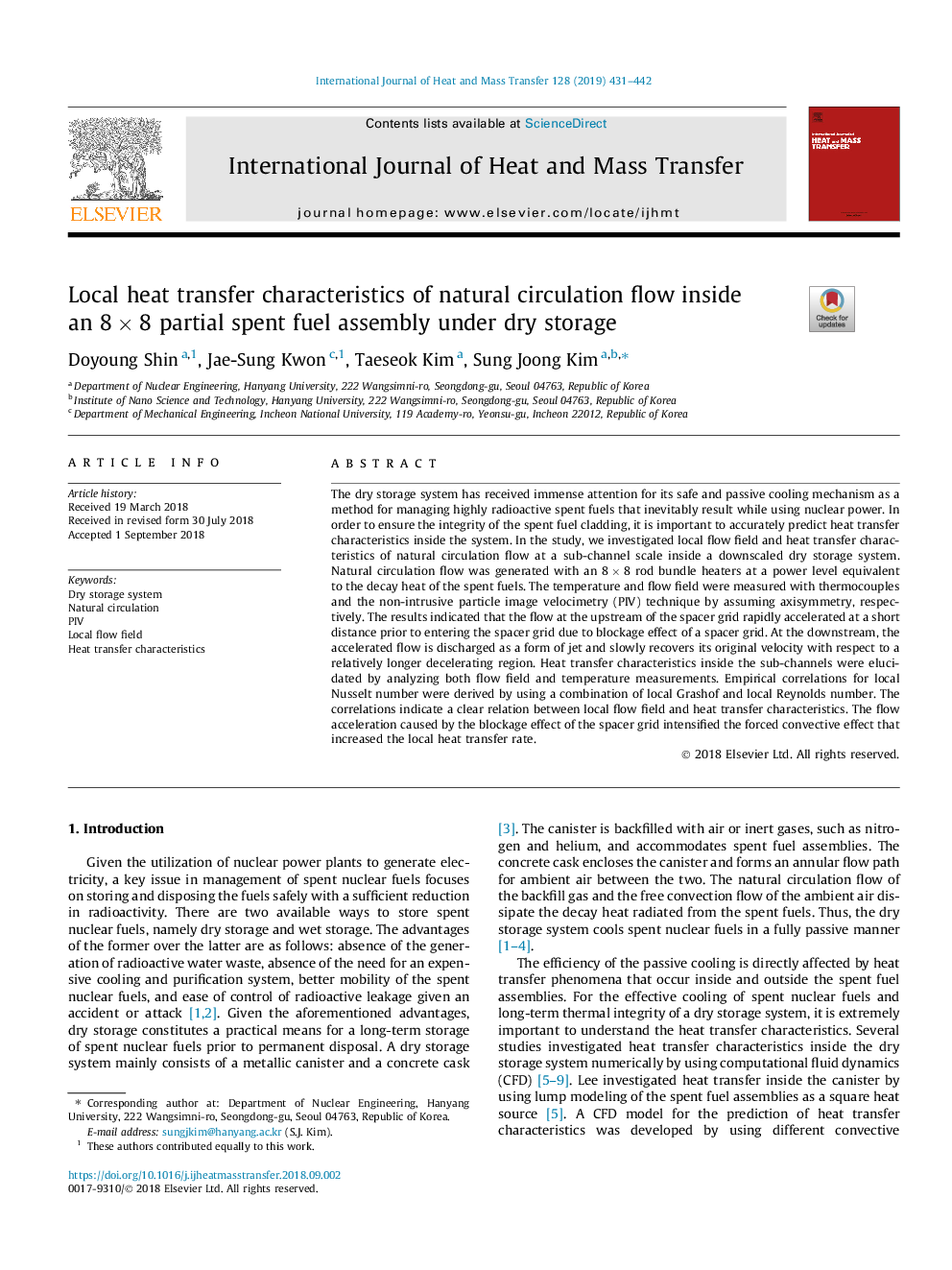| Article ID | Journal | Published Year | Pages | File Type |
|---|---|---|---|---|
| 10139893 | International Journal of Heat and Mass Transfer | 2019 | 12 Pages |
Abstract
The dry storage system has received immense attention for its safe and passive cooling mechanism as a method for managing highly radioactive spent fuels that inevitably result while using nuclear power. In order to ensure the integrity of the spent fuel cladding, it is important to accurately predict heat transfer characteristics inside the system. In the study, we investigated local flow field and heat transfer characteristics of natural circulation flow at a sub-channel scale inside a downscaled dry storage system. Natural circulation flow was generated with an 8â¯Ãâ¯8 rod bundle heaters at a power level equivalent to the decay heat of the spent fuels. The temperature and flow field were measured with thermocouples and the non-intrusive particle image velocimetry (PIV) technique by assuming axisymmetry, respectively. The results indicated that the flow at the upstream of the spacer grid rapidly accelerated at a short distance prior to entering the spacer grid due to blockage effect of a spacer grid. At the downstream, the accelerated flow is discharged as a form of jet and slowly recovers its original velocity with respect to a relatively longer decelerating region. Heat transfer characteristics inside the sub-channels were elucidated by analyzing both flow field and temperature measurements. Empirical correlations for local Nusselt number were derived by using a combination of local Grashof and local Reynolds number. The correlations indicate a clear relation between local flow field and heat transfer characteristics. The flow acceleration caused by the blockage effect of the spacer grid intensified the forced convective effect that increased the local heat transfer rate.
Related Topics
Physical Sciences and Engineering
Chemical Engineering
Fluid Flow and Transfer Processes
Authors
Doyoung Shin, Jae-Sung Kwon, Taeseok Kim, Sung Joong Kim,
